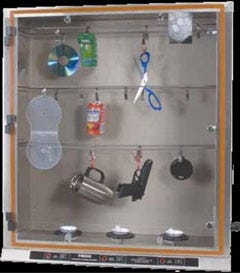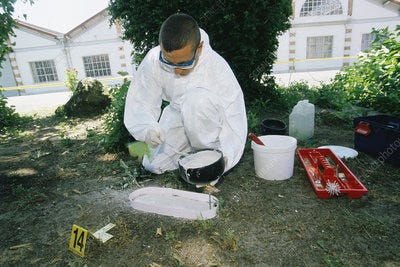# Revolutionary Forensic Advancements Reshaping Crime Solving
Written on
Chapter 1: The Evolution of Forensic Science
Forensics has undergone a remarkable transformation since the advent of DNA analysis. Prior to the late 1980s, it was considerably simpler for criminals to evade justice, as evidenced by numerous historical accounts and cinematic portrayals. Alongside DNA technology, various other significant advancements have shaped the field of forensics today.
With modern tools, we can extract fingerprints from social media images and track individuals through their devices, making it far more efficient to apprehend offenders than in the past. Below are five noteworthy forensic innovations that have greatly enhanced usability and effectiveness.
Section 1.1: Super Glue Fuming
Fingerprints are often left at crime scenes unless precautions, such as wearing gloves, are taken. The unique patterns formed by the sweat and oil from our skin result in latent fingerprints. To reveal these prints, a method known as super glue fuming is employed. This technique uses super glue, which has a strong affinity for the oils left behind, allowing it to adhere to the fingerprints.
The process takes place in a specialized chamber where super glue is heated alongside water. The vapor from the water, combined with the hot glue, makes the fingerprints visible. Once the print is revealed, it can be dusted or lifted with tape.

Despite its effectiveness, there is a risk of "over-gluing," which can obscure the ridges of the fingerprint if the chamber is used for too long.
Section 1.2: Forensic Facial Reconstruction
Forensic facial reconstruction is a fascinating technique that allows experts to recreate the visage of unidentified individuals using their skulls. This process combines anthropology and anatomy to hypothesize what a person might have looked like, and it has even been applied to historical figures using ancient remains.
Facial reconstruction can be performed in two dimensions (2D) or three dimensions (3D). The 2D method typically involves collaboration between forensic anthropologists and artists who analyze skull shapes. With advancements in technology, specialized software has been developed to facilitate this process quickly. Conversely, 3D reconstructions employ sculpting materials, requiring the skills of both forensic artists and anthropologists.
Section 1.3: The Utility of Plaster Casts
Plaster casts are essential for capturing footprints or tire treads, serving as a valuable form of impression evidence. Unlike 2D fingerprint impressions, plaster casts provide a three-dimensional representation of evidence found in materials like dirt, sand, and mud.
The casting process involves pouring a liquid plaster onto the relevant surface, which hardens to create a durable mold. This method allows investigators to collect evidence without damaging it, and the casts can be transported as needed. Dental stone is often the material of choice due to its robustness and precision.

Section 1.4: The Role of Fiber Analysis
Fibers can be crucial pieces of evidence, often transferred during an attack. While some fibers are commonplace, rare fibers can provide compelling evidence in court. Investigators analyze fibers using microscopy and various tests, such as burning or solubility assessments.
With the advent of electron microscopy, experts can examine fibers at a nanoscale, allowing for precise identification. Scanning electron microscopes utilize electrons to generate images, enhancing the ability to detect unique fiber patterns tied to specific brands or locations.
Section 1.5: The Impact of Biosensors on Drug Detection
Biosensors represent a cutting-edge advancement in forensic science, particularly in detecting illicit drugs. Utilizing nanotechnology, these sensors can be tailored to identify specific substances in a person's body.
Biosensors can detect drugs through various methods, including electrochemical reactions and calorimetry. When a targeted drug is present, the biosensor generates a signal that indicates the quantity of the substance in the individual’s system.
Final Thoughts
With ongoing technological innovations, it seems increasingly improbable for criminals to escape justice. The five techniques discussed above may seem straightforward, yet they remain invaluable in contemporary investigations. The integration of computer programs has further elevated the sophistication of these forensic methods.
Chapter 2: Advancements in Forensic Techniques
The first video titled "Advancements in forensic science changing ways investigators solve cold cases" highlights how new technologies are revolutionizing cold case investigations.
The second video, "Inside Forensic Science Season 1 Episode 5: Who Committed the Crime?" delves into the complexities of forensic investigations and the role they play in solving crimes.